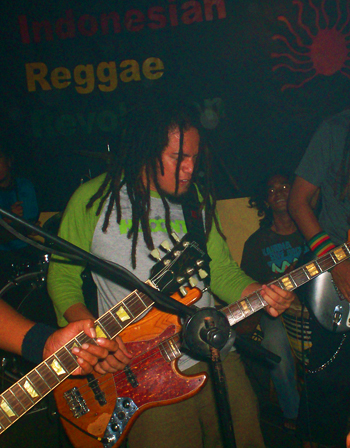Dreadlocked Indonesians adopt the Jamaican music form to speak of local socio-political issues
<br
Lisa Colquhoun
 |
Steven and CoconuTTreez have been credited with propelling
Indonesian reggae into the spotlightLisa Colquhoun
|
The 1980s saw the introduction of reggae to the beachside tourist bars of Bali and Lombok. Disconnected from its roots as resistance to colonial exploitation, it was instead performed as the hollow soundtrack for tipsy tourists on holiday in paradise.
Local visitors to the bars that had become known for live reggae, including Bruna Bar on Bali’s Kuta Beach and Pondok Senggigi on Lombok’s west coast, were gripped by reggae’s gentle rhythm and its invitation to sway. For the most part, they had no understanding of what reggae was really all about; after all, most couldn’t comprehend the Jamaican-accented English of the lyrics. As Joe – who frequented Pondok Senggigi in the early 1990s, and later fronted a string of popular reggae bands in Indonesia, including his current Gili Trawangan-based band, Mellow Mood – confessed, ‘I didn’t know what they were singing about. I would just watch the tourists dance, see the effect that reggae had on them and on me – no hurry hurry. That is why I chose reggae.’
But this initial attraction to the rhythm soon developed into a curiosity about reggae’s subject matter. Bali’s most celebrated reggae artist, Joni Agung, recalls spending hours investigating the definitions of every word in selected











